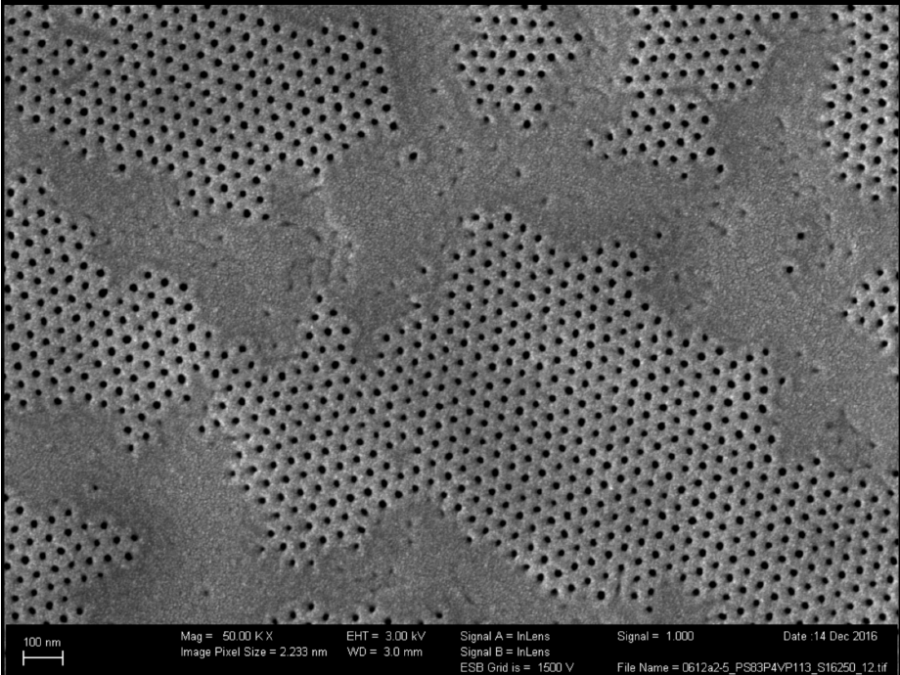Paving the way for future mineral processing and recycling technologies through large-scale analysis of particulate samples

Understanding and quantifying the exact composition of mineral samples paves the way towards advanced methodologies that not only increase the effectiveness of ore processing but also enable future recycling technologies. To this end, samples consisting of ground particles embedded into an epoxy matrix are imaged with computed tomography (CT) at micrometer resolution. Due to the sheer amount of particles in each sample, automated image analysis is quintessential to unlocking the potential of his technique. As part of this collaboration we develop a precise and robust instance segmentation method that enables large scale analysis of samples.
Publications
4725570
Particulate sampling
1
https://helmholtz-imaging.de/apa-bold-title.csl
50
date
desc
573
https://helmholtz-imaging.de/wp-content/plugins/zotpress/
%7B%22status%22%3A%22success%22%2C%22updateneeded%22%3Afalse%2C%22instance%22%3Afalse%2C%22meta%22%3A%7B%22request_last%22%3A0%2C%22request_next%22%3A0%2C%22used_cache%22%3Atrue%7D%2C%22data%22%3A%5B%7B%22key%22%3A%22GYCLTYZ6%22%2C%22library%22%3A%7B%22id%22%3A4725570%7D%2C%22meta%22%3A%7B%22creatorSummary%22%3A%22Gupta%20et%20al.%22%2C%22parsedDate%22%3A%222024-01-15%22%2C%22numChildren%22%3A1%7D%2C%22bib%22%3A%22%26lt%3Bdiv%20class%3D%26quot%3Bcsl-bib-body%26quot%3B%20style%3D%26quot%3Bline-height%3A%201.35%3B%20padding-left%3A%201em%3B%20text-indent%3A-1em%3B%26quot%3B%26gt%3B%5Cn%20%20%26lt%3Bdiv%20class%3D%26quot%3Bcsl-entry%26quot%3B%26gt%3BGupta%2C%20S.%2C%20da%20Assuncao%20Godinho%2C%20J.%20R.%2C%20Gotkowski%2C%20K.%2C%20%26amp%3B%20Isensee%2C%20F.%20%282024%29.%20%26lt%3Bb%26gt%3BStandardized%20and%20semiautomated%20workflow%20for%203D%20characterization%20of%20liberated%20particles%26lt%3B%5C%2Fb%26gt%3B.%20%26lt%3Bi%26gt%3BPowder%20Technology%26lt%3B%5C%2Fi%26gt%3B%2C%20%26lt%3Bi%26gt%3B433%26lt%3B%5C%2Fi%26gt%3B%2C%20119159.%20%26lt%3Ba%20class%3D%26%23039%3Bzp-DOIURL%26%23039%3B%20href%3D%26%23039%3Bhttps%3A%5C%2F%5C%2Fdoi.org%5C%2F10.1016%5C%2Fj.powtec.2023.119159%26%23039%3B%26gt%3Bhttps%3A%5C%2F%5C%2Fdoi.org%5C%2F10.1016%5C%2Fj.powtec.2023.119159%26lt%3B%5C%2Fa%26gt%3B%26lt%3B%5C%2Fdiv%26gt%3B%5Cn%26lt%3B%5C%2Fdiv%26gt%3B%22%2C%22data%22%3A%7B%22itemType%22%3A%22journalArticle%22%2C%22title%22%3A%22Standardized%20and%20semiautomated%20workflow%20for%203D%20characterization%20of%20liberated%20particles%22%2C%22creators%22%3A%5B%7B%22creatorType%22%3A%22author%22%2C%22firstName%22%3A%22Shuvam%22%2C%22lastName%22%3A%22Gupta%22%7D%2C%7B%22creatorType%22%3A%22author%22%2C%22firstName%22%3A%22Jose%20Ricardo%22%2C%22lastName%22%3A%22da%20Assuncao%20Godinho%22%7D%2C%7B%22creatorType%22%3A%22author%22%2C%22firstName%22%3A%22Karol%22%2C%22lastName%22%3A%22Gotkowski%22%7D%2C%7B%22creatorType%22%3A%22author%22%2C%22firstName%22%3A%22Fabian%22%2C%22lastName%22%3A%22Isensee%22%7D%5D%2C%22abstractNote%22%3A%22MSPaCMAn%20is%20the%20recently%20developed%20workflow%20that%20does%20the%20mineralogical%20quantification%20of%20individual%20particles%20using%20its%20histograms%20while%20considering%20the%20effects%20of%20partial%20volume%20artefacts%20in%20interphases%20at%20particle%20level%20detail.%20This%20paper%20demonstrates%20and%20validates%20the%20new%20developments%20in%20the%20MSPaCMAn%20workflow%2C%20aiming%20to%20minimize%20user%20bias%20and%20enhance%20the%20accuracy%20of%20MSPaCMAn.%20Here%2C%20in%20the%20new%20developments%20of%20MSPaCMAn%20workflow%2C%20firstly%2C%20the%20recently%20developed%20deep%20learning%20method%2C%20namely%20ParticleSeg3D%2C%20is%20employed%20to%20distinguish%20particles%20from%20the%20background.%20Secondly%2C%20the%20particle%26%23039%3Bs%20size%20and%20shape%20information%20are%20considered%20along%20with%20its%20histogram%20to%20classify%20and%20quantify%20the%20mineral%20phases%20in%20liberated%20particles.%20After%20the%20new%20developments%2C%20the%20detection%20limit%20of%20MSPaCMAn%20to%20characterize%20small%20and%20thin%20liberated%20particles%20is%20enhanced.%20Experimental%20results%20demonstrate%20the%20effectiveness%20of%20the%20MSPaCMAn%26%23039%3Bs%20updated%20workflow.%20It%20was%20found%20that%20the%20mineralogical%20composition%20calculated%20by%20the%20MSPaCMAn%26%23039%3Bs%20updated%20workflow%20was%20precise%2C%20with%20the%20highest%20coefficient%20of%20variance%20of%206.56%25.%20Moreover%2C%20the%20mineralogical%20composition%20determined%20by%20MSPaCMAn%26%23039%3Bs%20updated%20workflow%20had%20low%20variance%20across%20three%20different%20reconstruction%20parameters%20and%20two%20different%20voxel%20sizes%20%285.5%5Cu00a0%5Cu03bcm%20and%2010%5Cu00a0%5Cu03bcm%29.%20Comparisons%20with%20other%20quantification%20methods%20highlight%20the%20accuracy%20of%20MSPaCMAn%26%23039%3Bs%20updated%20workflow%20to%20determine%20the%20mineralogical%20compositions.%20When%20analyzing%20a%20test%20sample%20consisting%20of%20quartz%2C%20calcite%2C%20fluorite%2C%20and%20lepidolite%2C%20MSPaCMAn%26%23039%3Bs%20updated%20workflow%20achieved%20the%20highest%20mineralogical%20deviation%20of%20only%207.73%25%20from%20the%20reference%20mineralogy.%20In%20contrast%2C%20the%20random%20forest%20algorithm%20resulted%20in%20a%20deviation%20of%2051.47%25%2C%20while%20the%20manual%20thresholding%20method%20yielded%20a%20deviation%20of%2041.46%25.%20Overall%2C%20these%20findings%20emphasize%20the%20reliability%20and%20accuracy%20of%20MSPaCMAn%26%23039%3Bs%20updated%20workflow%20in%20quantifying%20mineralogical%20composition.%22%2C%22date%22%3A%222024-01-15%22%2C%22language%22%3A%22%22%2C%22DOI%22%3A%2210.1016%5C%2Fj.powtec.2023.119159%22%2C%22ISSN%22%3A%220032-5910%22%2C%22url%22%3A%22https%3A%5C%2F%5C%2Fwww.sciencedirect.com%5C%2Fscience%5C%2Farticle%5C%2Fpii%5C%2FS0032591023009427%22%2C%22collections%22%3A%5B%5D%2C%22dateModified%22%3A%222024-11-15T11%3A52%3A30Z%22%7D%7D%2C%7B%22key%22%3A%229RDRBGBX%22%2C%22library%22%3A%7B%22id%22%3A4725570%7D%2C%22meta%22%3A%7B%22creatorSummary%22%3A%22Gotkowski%20et%20al.%22%2C%22parsedDate%22%3A%222024%22%2C%22numChildren%22%3A0%7D%2C%22bib%22%3A%22%26lt%3Bdiv%20class%3D%26quot%3Bcsl-bib-body%26quot%3B%20style%3D%26quot%3Bline-height%3A%201.35%3B%20padding-left%3A%201em%3B%20text-indent%3A-1em%3B%26quot%3B%26gt%3B%5Cn%20%20%26lt%3Bdiv%20class%3D%26quot%3Bcsl-entry%26quot%3B%26gt%3BGotkowski%2C%20K.%2C%20Gupta%2C%20S.%2C%20Godinho%2C%20J.%20R.%20A.%2C%20Tochtrop%2C%20C.%20G.%20S.%2C%20Maier-Hein%2C%20K.%20H.%2C%20%26amp%3B%20Isensee%2C%20F.%20%282024%29.%20%26lt%3Bb%26gt%3BParticleSeg3D%3A%20A%20scalable%20out-of-the-box%20deep%20learning%20segmentation%20solution%20for%20individual%20particle%20characterization%20from%20micro%20CT%20images%20in%20mineral%20processing%20and%20recycling%26lt%3B%5C%2Fb%26gt%3B.%20%26lt%3Bi%26gt%3BPowder%20Technology%26lt%3B%5C%2Fi%26gt%3B%2C%20%26lt%3Bi%26gt%3B434%26lt%3B%5C%2Fi%26gt%3B%2C%20119286.%20%26lt%3Ba%20class%3D%26%23039%3Bzp-DOIURL%26%23039%3B%20href%3D%26%23039%3Bhttps%3A%5C%2F%5C%2Fdoi.org%5C%2F10.1016%5C%2Fj.powtec.2023.119286%26%23039%3B%26gt%3Bhttps%3A%5C%2F%5C%2Fdoi.org%5C%2F10.1016%5C%2Fj.powtec.2023.119286%26lt%3B%5C%2Fa%26gt%3B%26lt%3B%5C%2Fdiv%26gt%3B%5Cn%26lt%3B%5C%2Fdiv%26gt%3B%22%2C%22data%22%3A%7B%22itemType%22%3A%22journalArticle%22%2C%22title%22%3A%22ParticleSeg3D%3A%20A%20scalable%20out-of-the-box%20deep%20learning%20segmentation%20solution%20for%20individual%20particle%20characterization%20from%20micro%20CT%20images%20in%20mineral%20processing%20and%20recycling%22%2C%22creators%22%3A%5B%7B%22creatorType%22%3A%22author%22%2C%22firstName%22%3A%22Karol%22%2C%22lastName%22%3A%22Gotkowski%22%7D%2C%7B%22creatorType%22%3A%22author%22%2C%22firstName%22%3A%22Shuvam%22%2C%22lastName%22%3A%22Gupta%22%7D%2C%7B%22creatorType%22%3A%22author%22%2C%22firstName%22%3A%22Jose%20R.A.%22%2C%22lastName%22%3A%22Godinho%22%7D%2C%7B%22creatorType%22%3A%22author%22%2C%22firstName%22%3A%22Camila%20G.S.%22%2C%22lastName%22%3A%22Tochtrop%22%7D%2C%7B%22creatorType%22%3A%22author%22%2C%22firstName%22%3A%22Klaus%20H.%22%2C%22lastName%22%3A%22Maier-Hein%22%7D%2C%7B%22creatorType%22%3A%22author%22%2C%22firstName%22%3A%22Fabian%22%2C%22lastName%22%3A%22Isensee%22%7D%5D%2C%22abstractNote%22%3A%22%22%2C%22date%22%3A%2202%5C%2F2024%22%2C%22language%22%3A%22en%22%2C%22DOI%22%3A%2210.1016%5C%2Fj.powtec.2023.119286%22%2C%22ISSN%22%3A%2200325910%22%2C%22url%22%3A%22https%3A%5C%2F%5C%2Flinkinghub.elsevier.com%5C%2Fretrieve%5C%2Fpii%5C%2FS0032591023010690%22%2C%22collections%22%3A%5B%5D%2C%22dateModified%22%3A%222024-11-15T11%3A48%3A17Z%22%7D%7D%5D%7D
Gupta, S., da Assuncao Godinho, J. R., Gotkowski, K., & Isensee, F. (2024). Standardized and semiautomated workflow for 3D characterization of liberated particles. Powder Technology, 433, 119159. https://doi.org/10.1016/j.powtec.2023.119159
Gotkowski, K., Gupta, S., Godinho, J. R. A., Tochtrop, C. G. S., Maier-Hein, K. H., & Isensee, F. (2024). ParticleSeg3D: A scalable out-of-the-box deep learning segmentation solution for individual particle characterization from micro CT images in mineral processing and recycling. Powder Technology, 434, 119286. https://doi.org/10.1016/j.powtec.2023.119286
Other Collaborations

Ultra Content Screening for Clinical Diagnostics and Deep Phenotyping
For the Helmholtz Imaging project UCS (Ultra Content Screening for Clinical Diagnostics and Deep Phenotyping) we developed software to allow the project partners to process their immunofluorescence labelled light microscopy data of nuclei and cells for single cell proteomics. The developed pipeline includes instance segmentation of nuclei and cells in the immunofluorescence assays, registration of […]
Understanding lung diseases and optimizing their treatment
Understanding the distribution of nanoparticles after inhalation can lead to the discovery of novel, more effective drug delivering techniques. To this end we develop AI-based methods for semantic segmentation of the airways in non-dissected whole murine lungs, imaged with light sheet fluorescence microscopy. The analysis of airway properties in diseased lungs will furthermore shed light […]